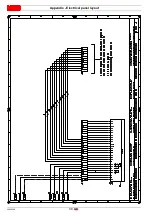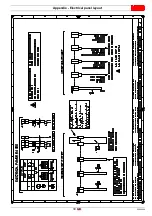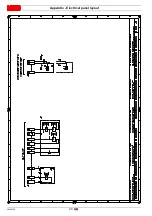
25
20098208
GB
Start-up, calibration and operation of the burner
6.8.2
Operation
Burner without the output power regulator RWF40
Once the start-up cycle is completed, the servomotor command
moves on to the TR thermostat/pressure switch that controls the
pressure or the temperature in the boiler, point C (Fig. 33).
(The electrical control box continues to check the presence of the
flame and the correct position of the air and gas maximum pres-
sure switches).
–
If the temperature or the pressure is low so the thermostat/
pressure switch TR is closed, the burner progressively in-
creases the output up to the MAX value (section C-D).
–
If subsequently the temperature or pressure increases until
TR opens, the burner progressively decreases its output to
the MIN. value (section E-F). The sequence repeats endless-
ly.
–
The burner locks out when the heat request is less than the
heat supplied by the burner at MIN. output, (section G-H.
The TL thermostat/pressure switch opens, and the servomo-
tor returns to angle 0 limited by the contact of the cam 2).
The air damper closes completely to reduce heat losses to a
minimum.
For every change of output, the servomotor will automatically
change the gas flow rate (butterfly valve), the airflow (fan damp-
er) and the air pressure (2 shutters in the combustion head).
Burner with the output power regulator RWF40
See manual enclosed with the adjuster.
6.8.3
Burner flame goes out during operation
If the flame should accidentally go out during operation, the burn-
er will lock out within 1s.
6.8.4
Ignition failure
If the burner does not fire (Fig. 34), it goes into lockout within 3 sec.
after the gas valve opens and 156 seconds after the control device
TL closes.
Fig. 34
NO IGNITION
20061661
















































